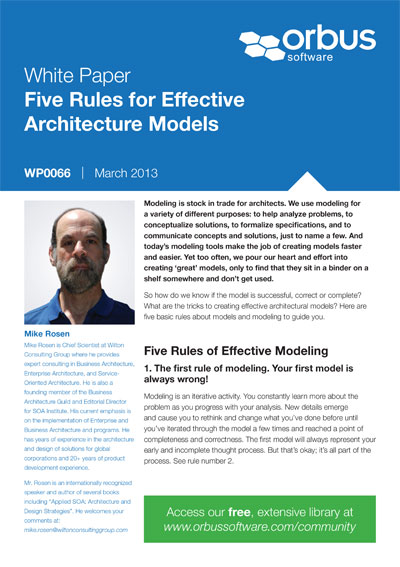A white paper providing five basic rules about models and modeling for architects.
Modeling is stock in trade for architects. We use modeling for a variety of different purposes: to help analyze problems, to conceptualize solutions, to formalize specifications, and to communicate concepts and solutions, just to name a few. And today’s modeling tools make the job of creating models faster and easier. Yet too often, we pour our heart and effort into creating ‘great’ models, only to find that they sit in a binder on a shelf somewhere and don’t get used.
So how do we know if the model is successful, correct or complete? What are the tricks to creating effective architectural models? Here are five basic rules about models and modeling to guide you.
1. The first rule of modeling. Your first model is always wrong
Modeling is an iterative activity. You constantly learn more about the problem as you progress with your analysis. New details emerge and cause you to rethink and change what you’ve done before until you’ve iterated through the model a few times and reached a point of completeness and correctness. The first model will always represent your early and incomplete thought process. But that’s okay; it’s all part of the process.
Please login to continue reading this white paper from Mike Rosen where he goes through five basic rules about models and modeling to guide architects and help them with their concepts and solutions.
